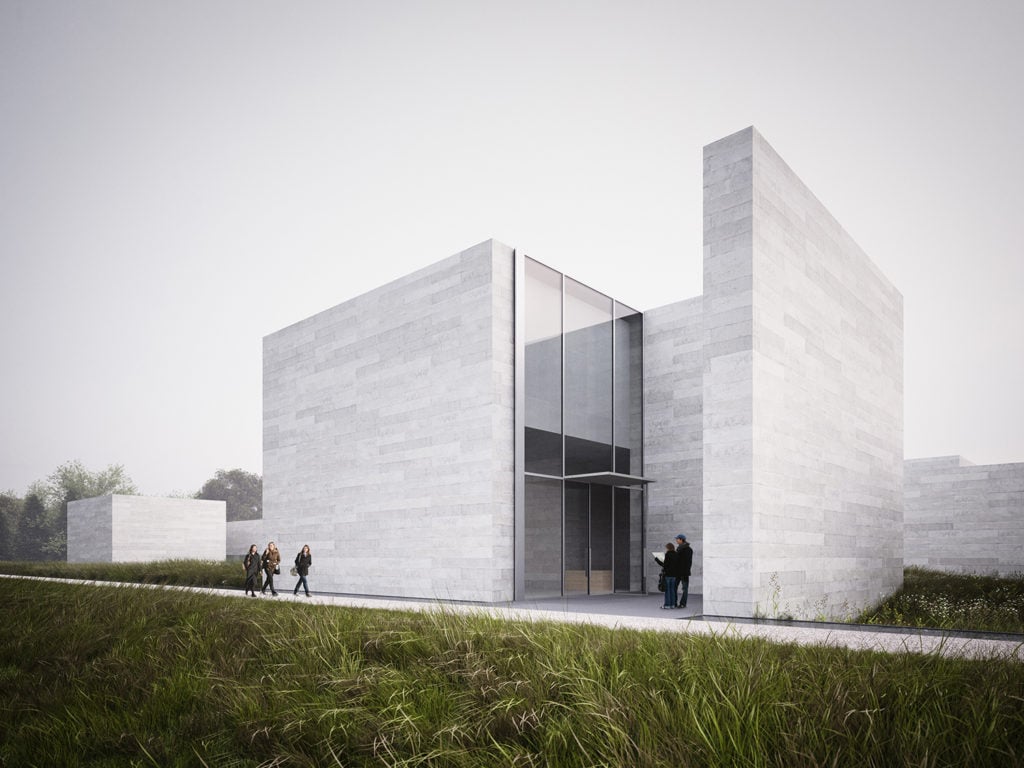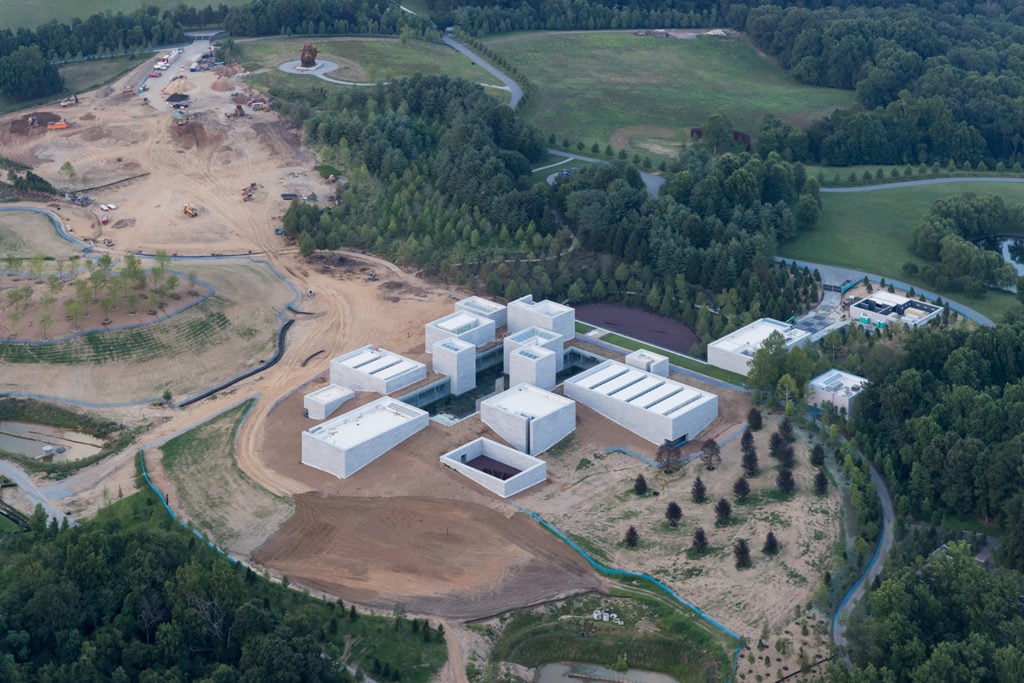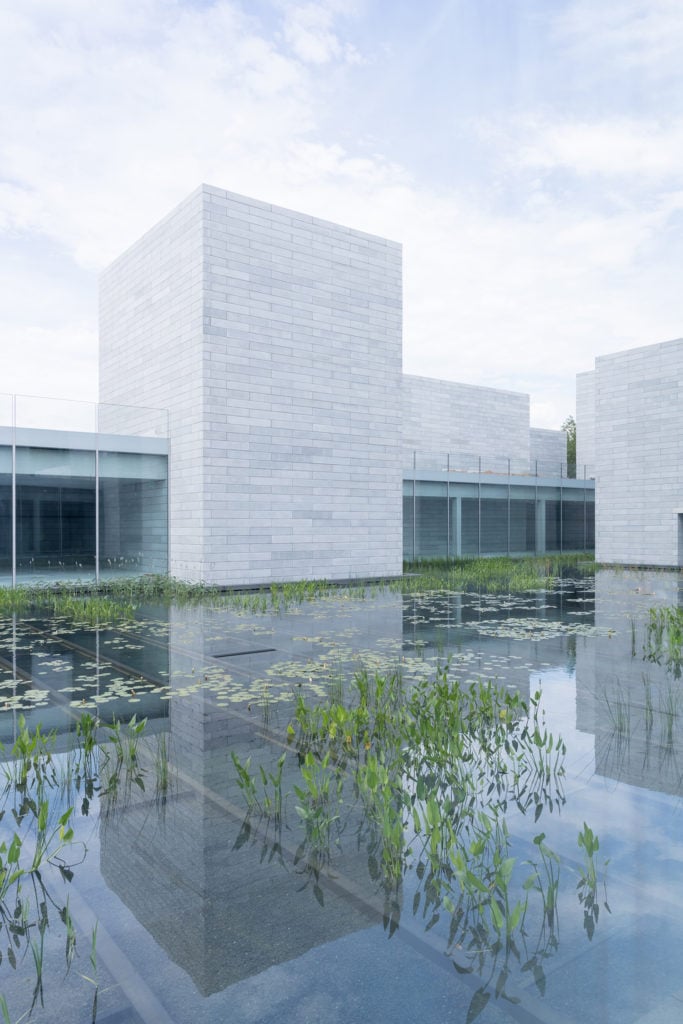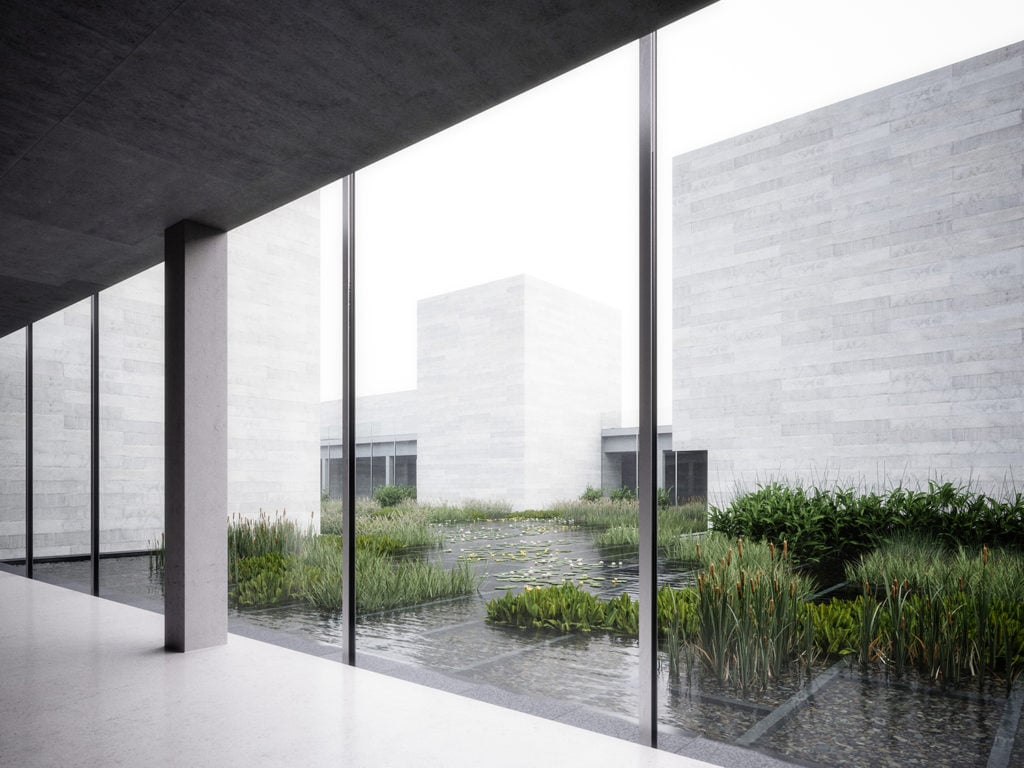Art World
A Frick for the 21st Century? Glenstone Is About to Become One of America’s Largest Private Museums
A new expansion could up annual attendance from 10,000 to 100,000.

A new expansion could up annual attendance from 10,000 to 100,000.

Sarah Cascone

A rural suburb of Washington, DC, will soon become home to one of the largest private museums in the world. The Glenstone Museum in Potomac, Maryland, plans to unveil a long-in-the-works expansion in late 2018, the institution announced yesterday. (The opening date has been pushed back from early 2018.)
The Thomas Phifer-designed expansion, which includes 50,000 square feet of exhibition space, will make Glenstone larger than the Whitney Museum of American Art in New York and the Broad in Los Angeles.
The museum’s founders, science and technology billionaire Mitchell Rales and his wife, art historian Emily Rales, say they want Glenstone to become a modern-day version of New York’s Frick Collection, the Gilded Age mansion-turned-museum built by industrialist Henry Clay Frick.
“I imagine that in the future, people will come to Glenstone when they want to experience what it was like in the 20th and 21st centuries,” Emily Rales, who directs Glenstone, said at a press briefing yesterday. (The founders also live on the 200-acre property.)
Glenstone originally opened in 2006 with a 30,000-square-foot building designed by the late New York architect Charles Gwathmey. In preparation for phase two, the couple visited some 50 museums around the world looking for inspiration.
Seeking to seamlessly integrate art, architecture, and the surrounding landscape, they took notes from the Louisiana Museum outside Copenhagen, the Foundation Beyeler in Basel, and the Menil Collection in Houston.
Sited on a ridge on Glenstone’s expansive grounds, the new building, called the Pavilions, is a series of a dozen rooms partially embedded in the earth around a central water court.
Eight rooms will be dedicated to single-artist presentations, including an evolving presentation of work by Charles Ray, as well as displays of art by Roni Horn, Brice Marden, Michael Heizer, Martin Puryear, and Cy Twombly. Three rooms will host rotating exhibitions. The final pavilion offers a framed view of the surrounding landscape.
Guests to the new Glenstone will have to make a 10-minute walk across a meadow to reach the Pavilions. (PWP Landscape Architects, who have planted 8,000 trees on the campus, 6,000 for the current phase of construction, recruited a dedicated meadow specialist to help with the job.) The hope is that visitors will feel as if they are leaving urban life behind to have “a calming experience with the landscape,” Phifer said.
The cost of the project has not been released, but a 2013 New York Times article pegged it at upwards of $125 million.

Aerial photo of the Pavilions, the Glenstone Museum Expansion. Photo courtesy of the Glenstone Museum/Iwan Baan.
Where the museum now receives about 10,000 visitors a year, it will soon be able to accommodate 100,000. It is currently open four days a week, and visitors must make timed reservations—a system designed to prevent overcrowded galleries and allow for leisurely visits.
“You really need to lay out four to six hours to see everything,” Mitchell said. (Eventually, the plan is to be open five days a week.)
Mitchell began collecting art in 1990s. The idea for Glenstone, which has free admission, grew out of a near-death experience in 1998, when he survived a helicopter crash in Russia that killed a fellow passenger. Back home, Mitchell reevaluated his priorities and began thinking about “what I wanted to do as an important legacy for the Rales family,” he recalled.

The Water Court at the Pavilions, the Glenstone Museum Expansion. Photo courtesy of the Glenstone Museum/Iwan Baan.
The couple’s holdings span just after World War II (they started out with Abstract Expressionist greats) to the present. Eventually, they intend for the collection to showcase 150 years’ worth of art. The museum will continue to acquire work by the artists already represented in the collection after the Rales’s deaths.
In contrast to many of today’s collector-founded institutions, which lack long-term legacy plans, Glenstone is one of the best endowed private museums of Modern and contemporary art in the world. The Glenstone Foundation’s assets were $1.25 billion in 2015, according to its most recent tax filings.
Currently, the museum is presenting an exhibition of the work of Roni Horn, its sixth show to date. Up next will be a survey of work by Louise Bourgeois. An accompanying publication will feature previously unpublished excerpts from the artist’s journals.
See more renderings of the museum’s expansion below.

Glenstone Museum expansion. Rendering courtesy of Thomas Phifer & Partners and the Glenstone Museum.